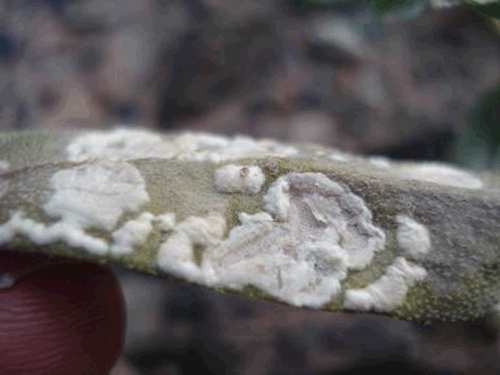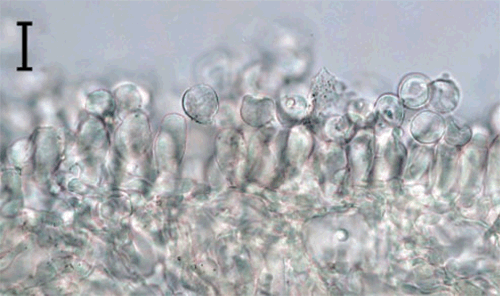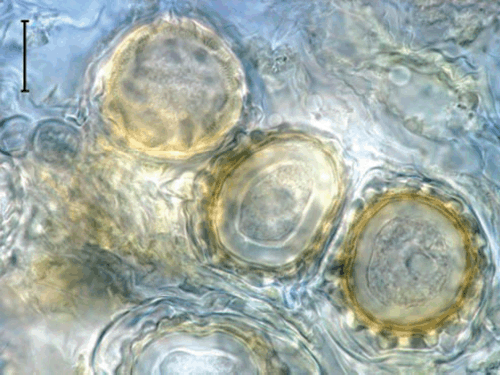Albugo candida causing white rust on Erysimum crassicaule in Iran
M. R. Mirzaee A , M. Abbasi B and M. Mohammadi C DA Agricultural and Natural Resources Research Center of Southern Khorasan, PO Box 413, Birjand, Iran.
B Iranian Research Institute of Plant Protection, PO Box 19395-1454 Tehran, Iran.
C Department of Plant Pathology and Microbiology, 1463 Boyce Hall, University of California-Riverside, Riverside, CA 92507, USA.
D Corresponding author. Email: mojtabam@ucr.edu
Australasian Plant Disease Notes 4(1) 124-125 https://doi.org/10.1071/DN09050
Submitted: 16 September 2009 Accepted: 17 November 2009 Published: 30 November 2009
Abstract
White rust of Erysimum crassicaule caused by Albugo candida is newly reported from Iran. This is the first record of this fungal disease on E. crassicaule both in Iran and worldwide.
Keywords: Albuginaceae, desert plant, Oomycete, white blister.
Albugo candida (Pers.) Roussel (Oomycota: Albuginaceae), the causal agent of white rust disease, is newly reported on Erysimum crassicaule Boiss. The host plant is a desert therophyte belonging to the Brassicaceae and is distributed in Iran and Pakistan. During July 2007 and May 2009, diseased E. crassicaule showing typical symptoms of white rust were collected from a rangeland in the Birjand region (Esfahroud and Sarab), Eastern Iran. Approximately 50% of the plants in the surveyed area (0.1 ha) showed typical white rust symptoms including white-to-cream coloured, blister-like sori on the leaves. Sori were mostly coalescent, rarely solitary (Figs 1 and 2), formed mostly on the lower side of the leaves. Sori were whitish, mostly circular or irregular and variable in size (mostly 1–4 mm in diameter). Sporangiophores were hyaline and clavate, 15–20 × 27–42.5 µm. Sporangia were produced in chains, spherical-to-oval, subhyaline, vacuolate, 15–20 μm diameter (Figs 3 and 4). Oospores were verrucose, dark brown, 44–50 µm diameter (Fig. 5). The causal agent was determined as Albugo candida on the basis of the above-mentioned characters and identity of the host plant (Choi and Priest 1995). Although there are numerous records of this pathogen on several species of Erysimum in Europe, Central and East Asia and also the USA (Farr et al. 2009), this is the first record of A. candida infecting E. crassicaule worldwide. A voucher specimen was deposited at the fungal collection of the Ministry of Agriculture, Tehran, Iran (IRAN 14219 F).

|

|

|

|

|


